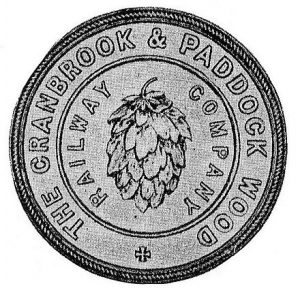Horsmonden Station
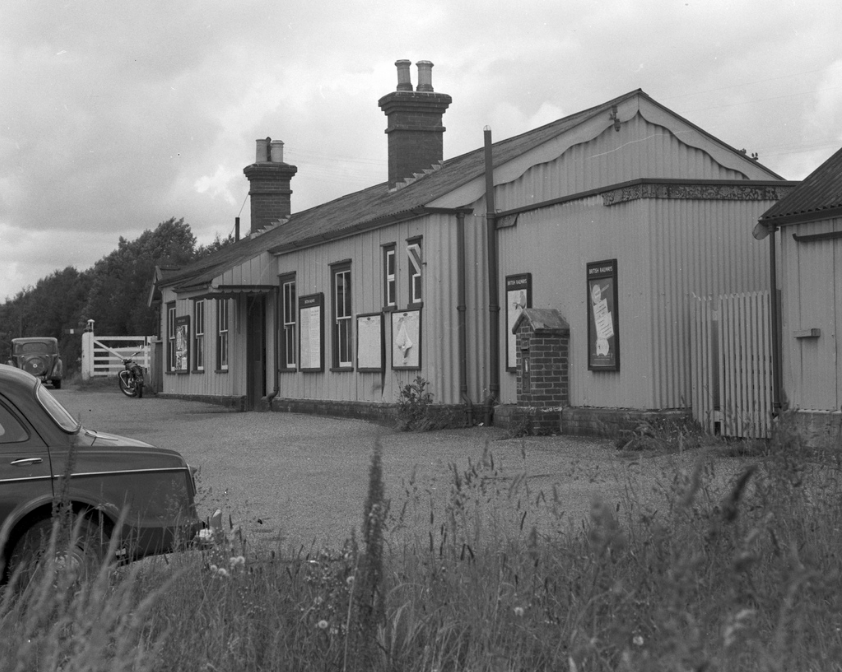
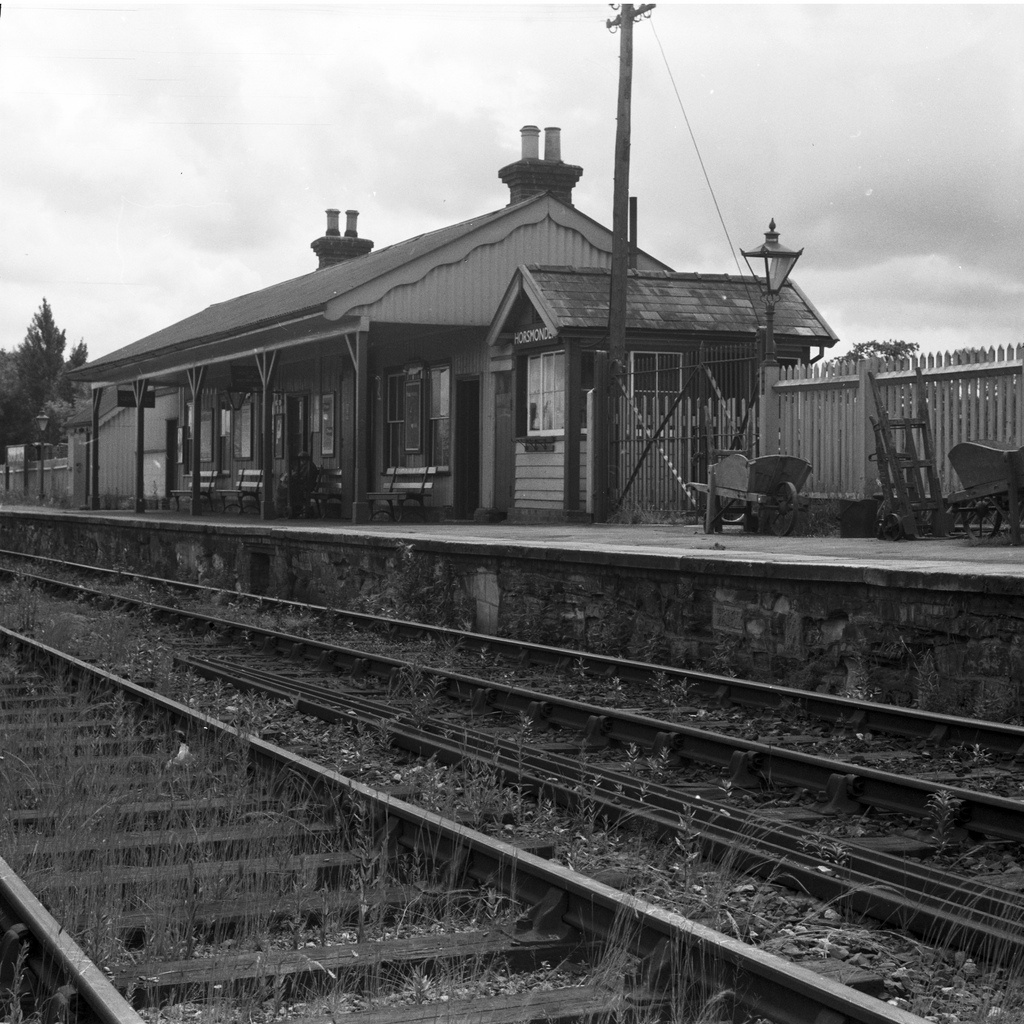
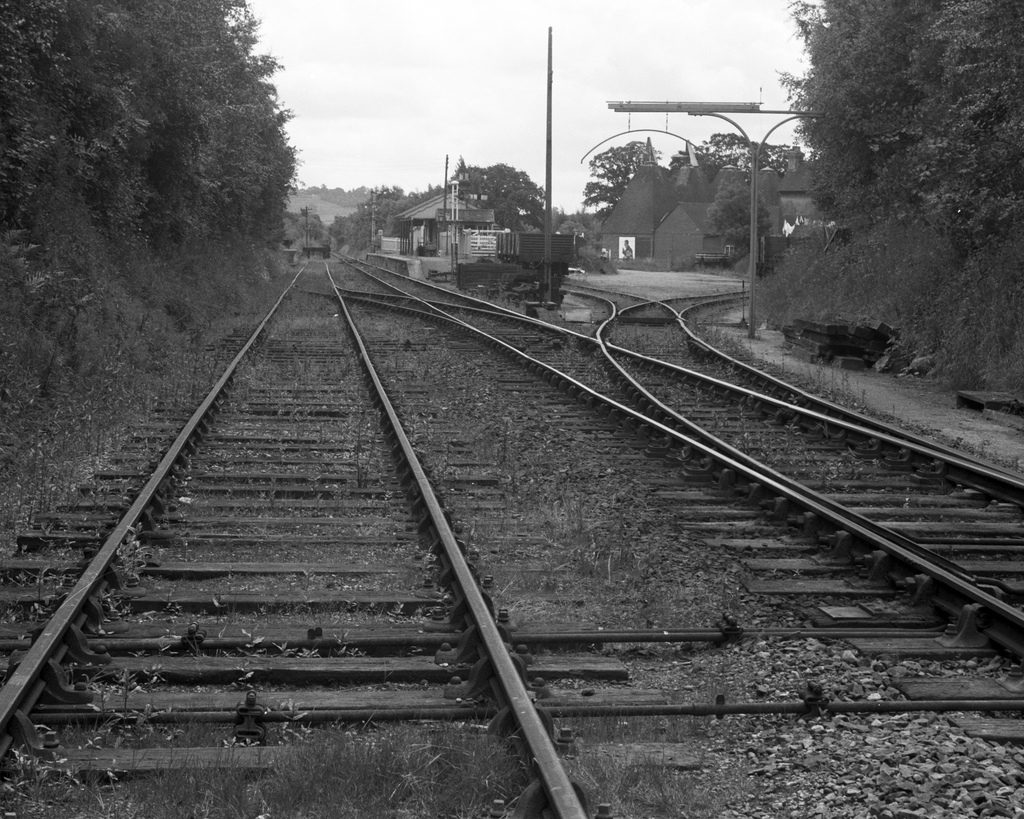
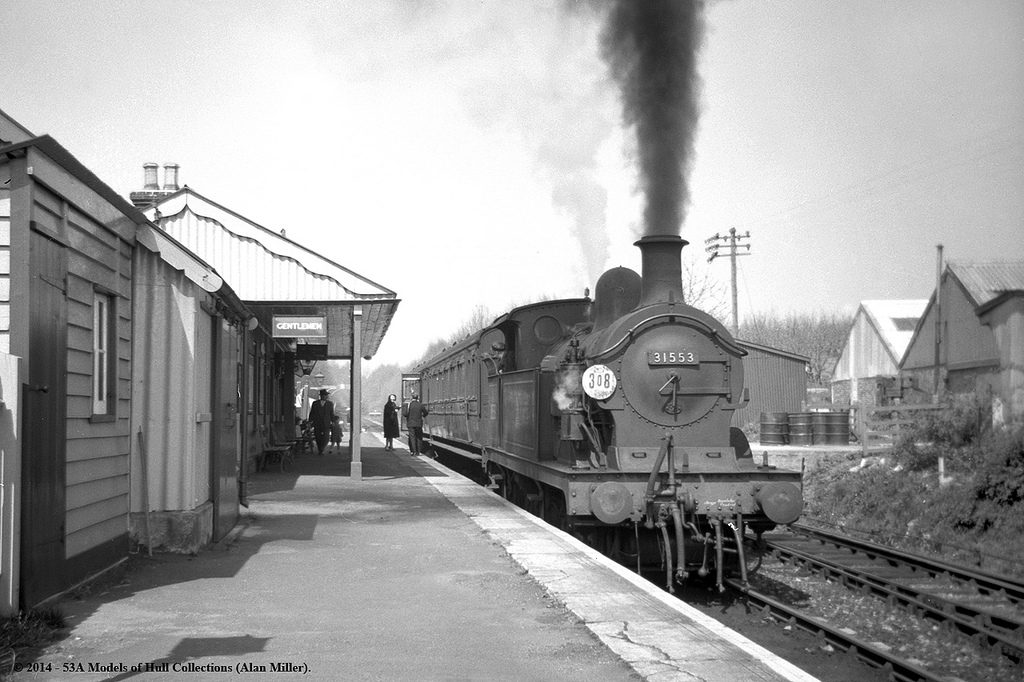
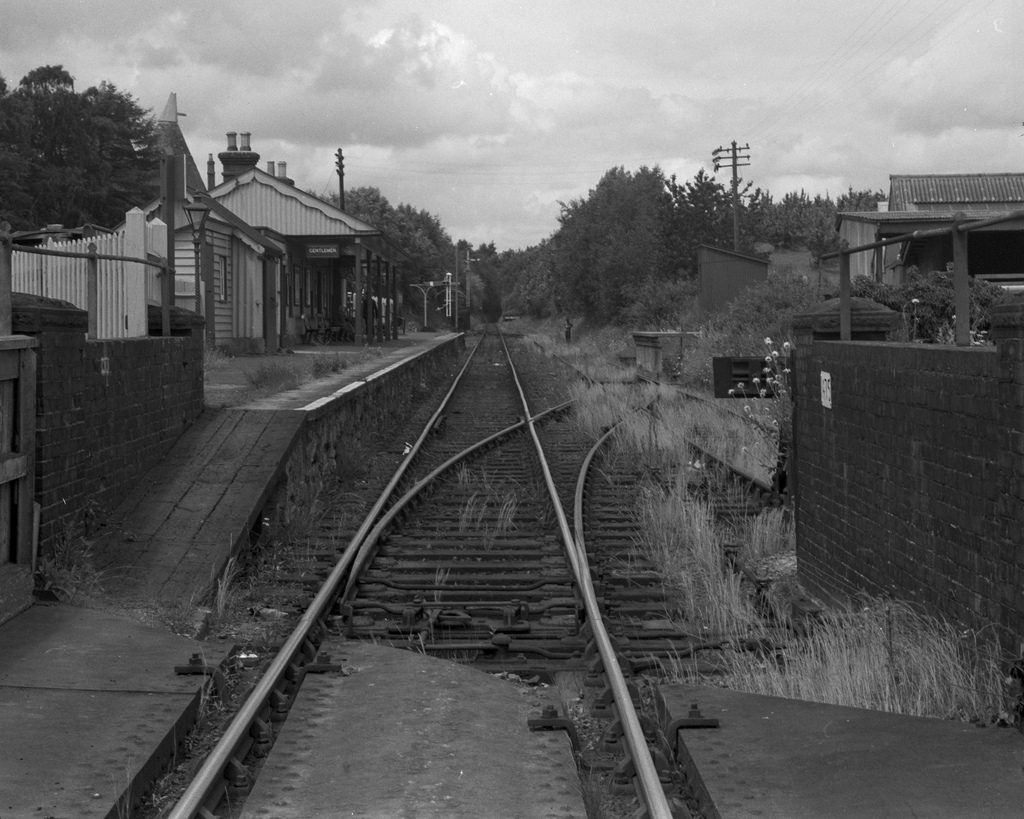
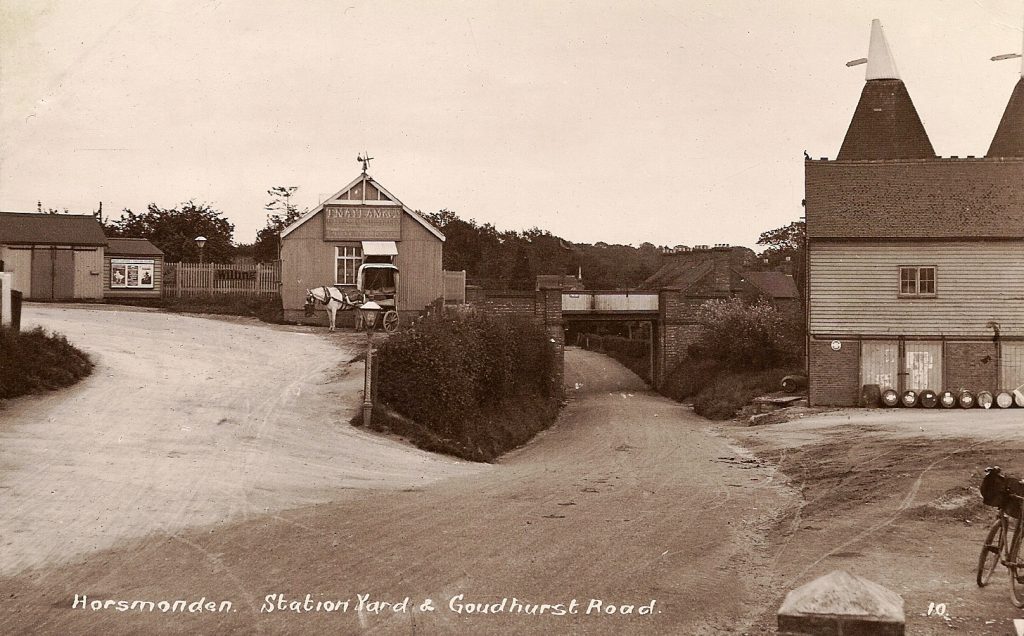
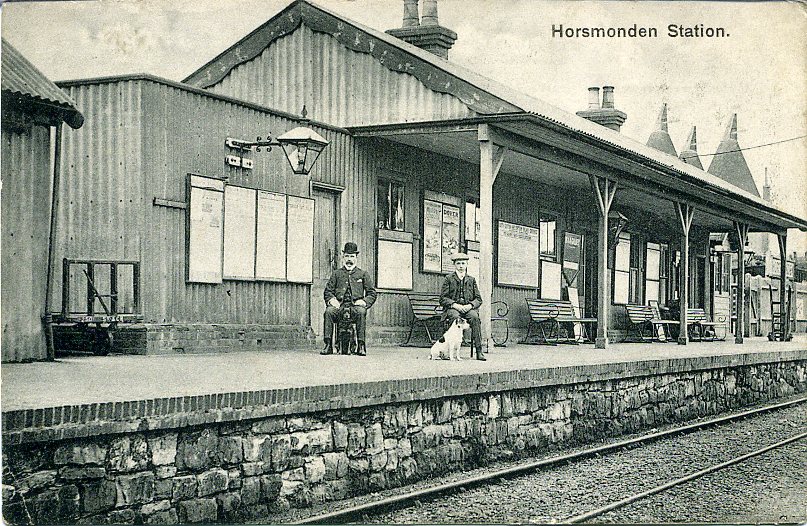
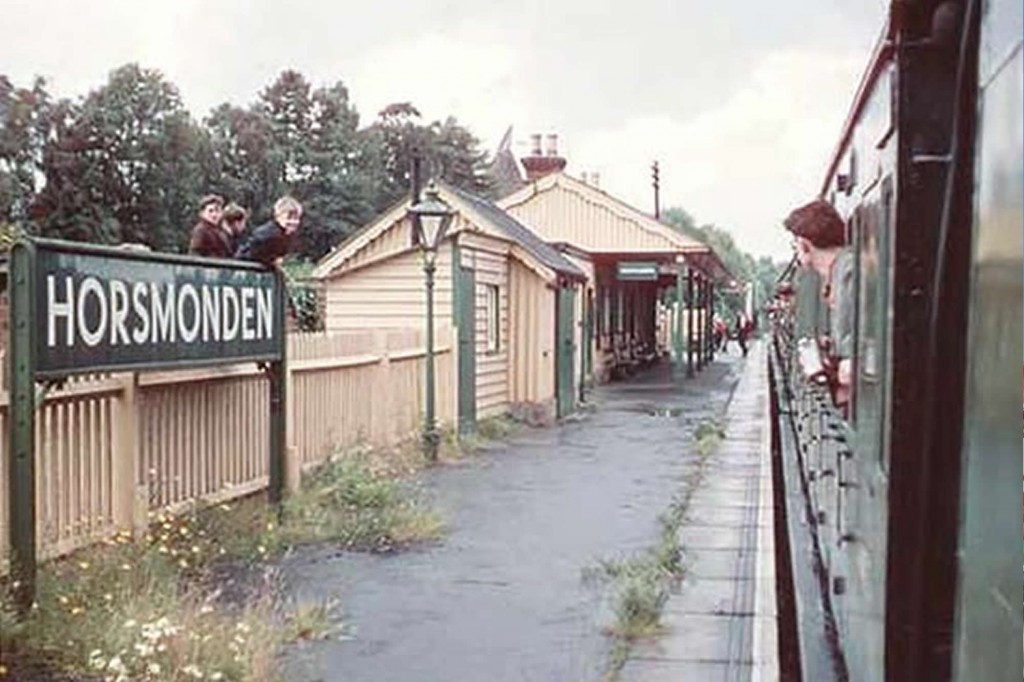
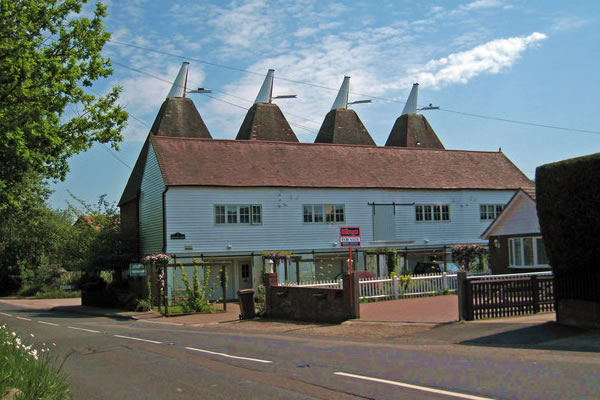
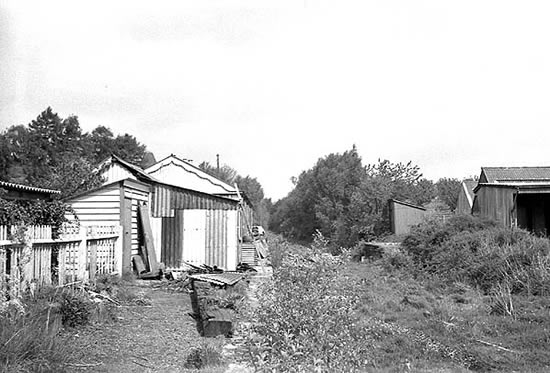
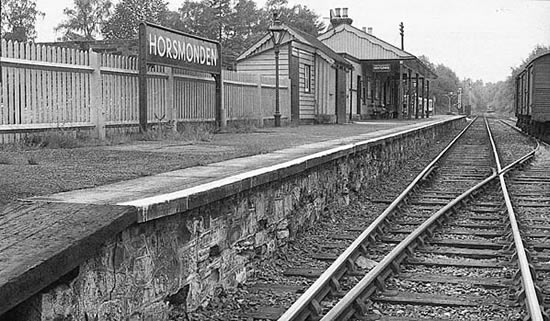
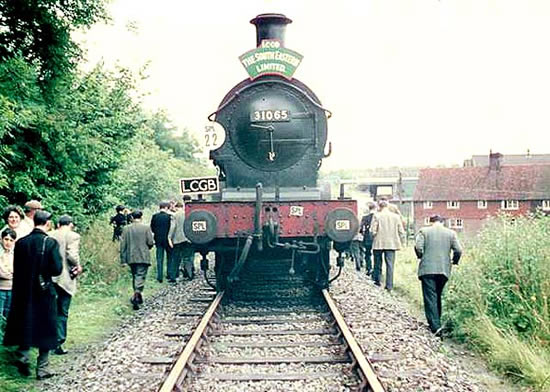
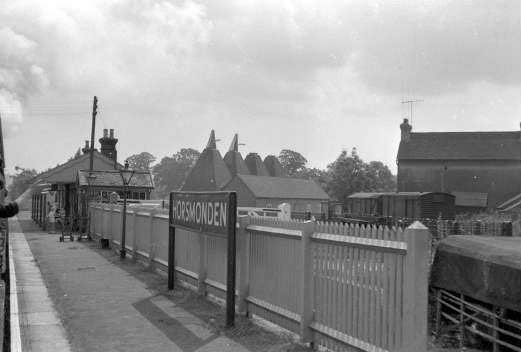
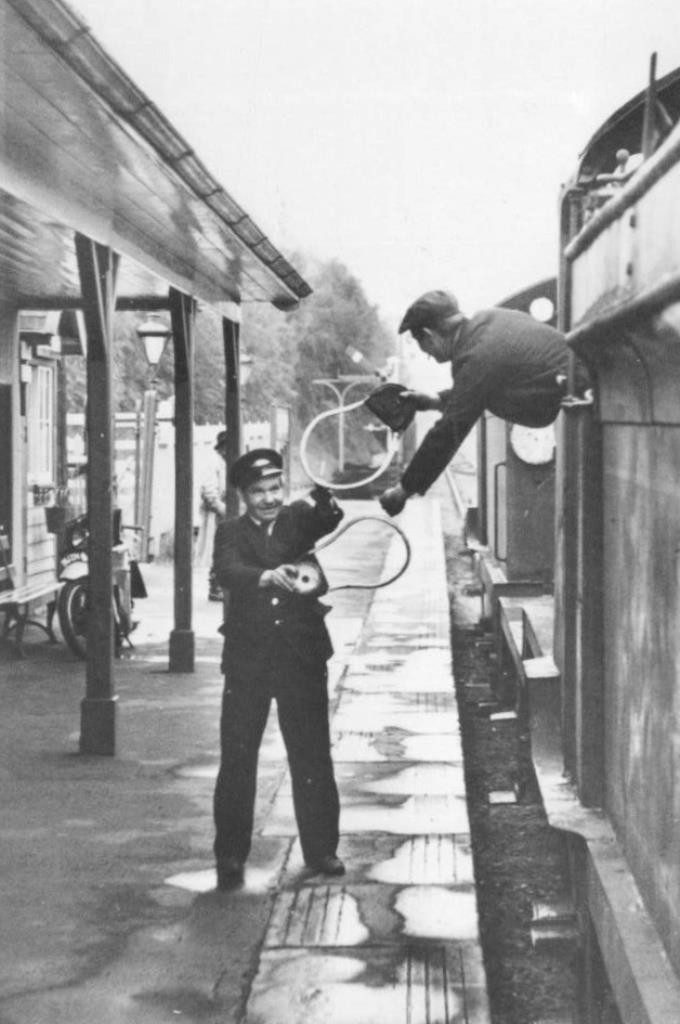
A station on the Hawkhurst Branchline
Horsmonden Station was situated on the Hawkhurst Branchline and had a single 300ft platform located on the up side of the line plus a loop which served an adjoining fruit packing warehouse where loaded wagons of apples where despatched to all parts of the country.
The station building was a single storey corrugated iron clad building with a wooden platform awning, synonymous of the lines built by Colonel Stephens (Holman Fred Stephens). There was a two road goods yard at the back of the station with a three storey, dormer windowed stationmaster’s house facing onto the road.
Further Reading
- Branchline to Hawkhust– Authors: Vic Mitchell & Keith Smith
- The Hawkhurst Branch – Author: Brian Hart
- Hawkhurst Branch Line – Author: P A Harding
| Date opened: | 1st October 1892 |
| Location: | On the north side of Goudhurst Road formerly Station Road |
| Company on opening: | Cranbrook & Paddock Wood Railway |
| Date closed: | 12th June 1961 |
| Company on closing: | British Railways (Southern Region) |
| Present state: | The main station building survives and is in use trading as the ‘Old Station Garage’. The station master’s house is in private occupation. |
| OS Grid Ref: | TQ705404 |
Notes
There were several proposals to build branch lines in the Weald of Kent all promoted by local groups rather than the South Eastern Railway who preferred to step in at a later stage to rescue the ailing companies once the money ran out. Most of the early proposals quickly ran out of steam but in 1864, the Weald of Kent Railway obtained powers to build a line from Paddock Wood to Hythe running through Cranbrook and Tenterden. Although this railway failed to materalise the Cranbrook & Paddock Wood Railway was incorporated in 1877 to build the northern section of the Weald of Kent line between Paddock Wood and Cranbrook. The line was to be built with local money but the South Eastern Railway agreed to contribute towards the venture once construction had started Construction started in 1879 but the money quickly ran out and the South Eastern Railway appeared to have lost interest. Despite this, a second Act was obtained in 1882 for a 1.5 mile extension from Cranbrook to Hawkhurst and eventually the South Eastern Railway agreed to support the line in order to prevent their arch-rival, the London, Chatham & Dover Railway, from gaining a foothold in what they regarded as their territory.

Further delays meant that it was twelve years before the line was ready for passengers, the first section, from Paddock Wood to Hope Mill for Goudhurst & Lamberhurst opening on 1 October 1892. Nearly a year passed before the final part of the line came into service, the extension to Hawkhurst via Cranbrook opening on 4 September 1893; on the same date Hope Mill was renamed Goudhurst. Holman Stephens, later known as Colonel Stephens, was the resident engineer during construction. The line was single throughout, with passing loops provided at all three intermediate stations, though only Goudhurst had two platforms. A short bay platform was provided at Hawkhurst. The Sentinell-Cammell steam railbus originally used on the Brighton-Devils Dyke branch put in a brief appearance in 1936 but was not a success. Goods traffic was mainly fruit and hops outwards and coal inwards. One mainstay was the transport of a million potted plants a year on behalf of F W Woolworth to branches all over the country. From the outset all train services were operated by the South Eastern Railway, though the Cranbrook & Paddock Wood Railway Company was not officially absorbed until 1900. The SER and the LCDR combined in 1899 under agreement that both companies would retain their independence while being administered under a management committee operating as the South Eastern & Chatham Railway. The LCDR was itself incorporated into the Southern Railway under the 1923 grouping and finally British Railways after nationalisation in 1948. From the offset traffic on the line was light, due in part to the inconvenient locations of stations. Extra traffic was generated during the hop picking season which, at its height, brought up to 26 special trains a day with each train carrying up to 350 people. By 1959 this traffic had declined and the line was carrying less than 200 passengers a day, many of them children. The final blow came when the local education authority took out a contract with the Maidstone & District Motor Company to transport the children by bus. Despite rumours of electrification, closure was announced and the line finally closed on 12 June 1961.
On the following day a ‘Farewell to Steam’ tour organised by the Locomotive Club of Great Britain visited the line and was the last public train to run into Hawkhurst. The track was lifted in 1964 and in 1967 the station sites were offered for sale.
Unique loco arrives at Sheffield Park.
UPDATE FROM 23/6/97 ABOUT THE LOCO SHOWN
The big news is the arrival, at Sheffield Park, of the sole surviving South Eastern Railway locomotive. The ‘O1’ class 0-6-0 No.65 (BR 31065) was built to Stirling’s 1878 ‘O’ class design by the SER in 1896, and rebuilt by Wainwright in 1908 with an H-class boiler. It was re-united with the Bluebell’s SECR H and C class locomotives after a 21-year separation; all three had been together at Ashford. The locomotive, long described in books as “dismantled on a farm in Kent”, was seen in public for the first time since it’s Ashford days when the frames and wheels arrived at Sheffield Park on Saturday 21st, followed by the tender, with its distinctive outside springs above the running plate, on Sunday. The final major component, still to arrive (in about three weeks time), is the boiler, which is reported as being in good condition. I have to say that the rest of the loco did not appear to be in particularly bad condition either!
Since he has more of the background information, the following is quoted from Peter Jessop’s Maunsell Loco Society e-mail bulletin:
“This 0-6-0 engine is to be restored and run at the Bluebell following a deal brokered between the Bluebell and the owner of the engine, Mr Esmond Lewis-Evans. The engine is in good shape despite having been split into chassis, boiler and tender, and being located at multiple sites in the South East. As he is mindful of his age, and being of a desire to see the engine work once again, a deal was struck that keeps ownership with Mr Lewis-Evans, but allows the Bluebell sufficient scope to invest in a general overhaul and run the engine on its metals. The timescale here is as flexible as preservationists allow it to be of course, but a target of 1999 has been quoted, which is the 100th anniversary of the founding of the South East and Chatham Railway, on which it served. As this is such a significant engine, that had quite frankly been thought to have been lost to preservation.”
The arrival of this locomotive gives the Bluebell a much more complete locomotive collection. Six of the eight preserved SECR locomotives are now at Sheffield Park, along with three spare boilers. It also gives the Bluebell a complete sequence of SR 0-6-0s from the O1, through the C and the Q to Bulleid’s unforgettable Q1. Each of these four locos is the sole survivor of its class.

